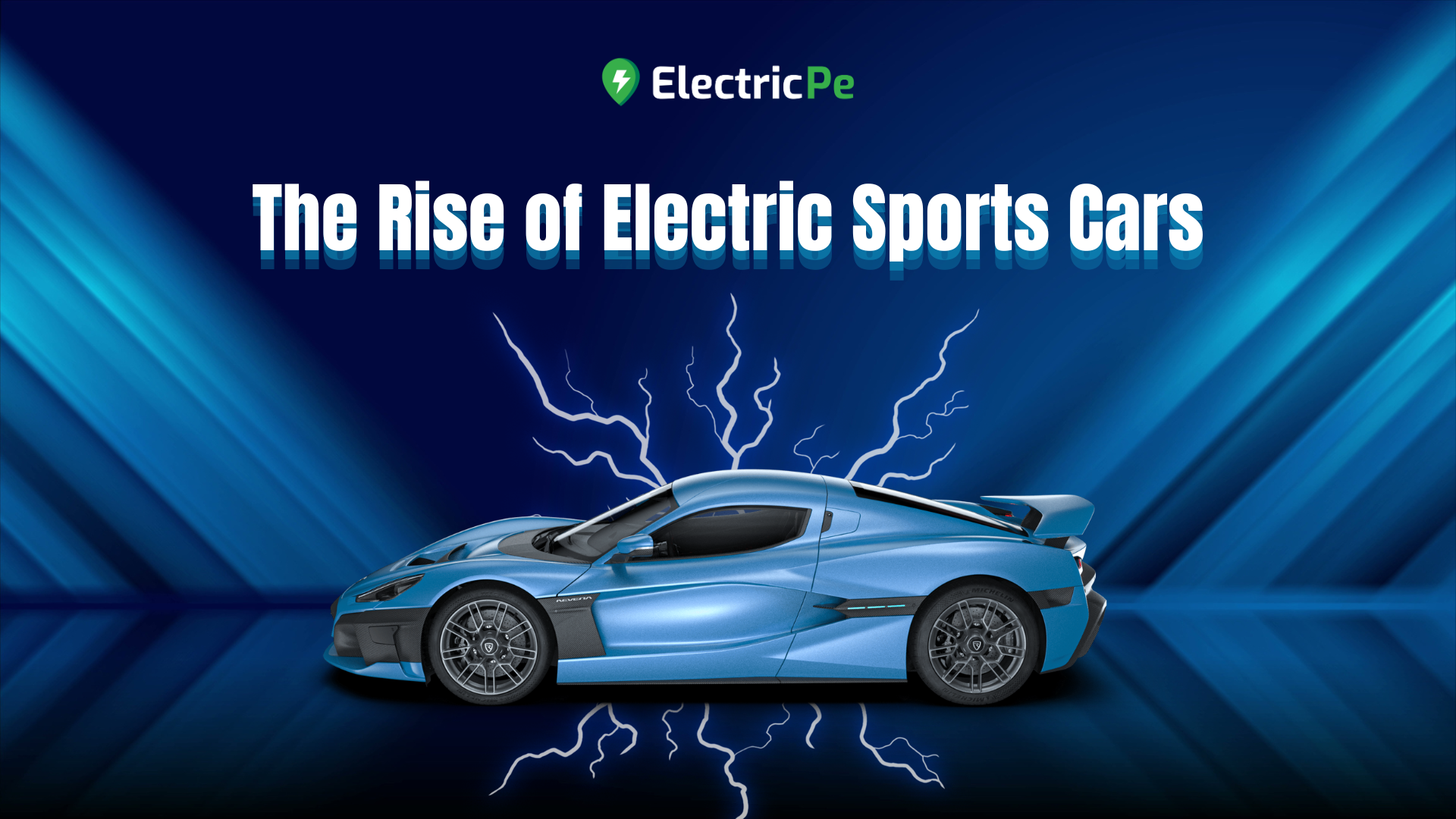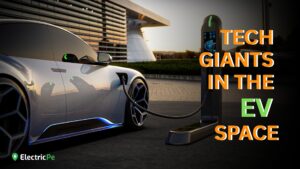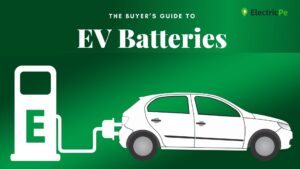Electric cars have existed since the 1800s but large scale production was snubbed due to advancements in gasoline car technology. The world then began to see the prowess of V8s and V12s in performance. However, electric powertrains have unmatched acceleration and were beating supercars at their own game giving rise to electric sports cars.
In this blog, we will dive head-first into the development and the eventual mass production of performance EVs. Before we begin, let’s understand the key drivetrain differences of ICE vs EV.
ICE vs EV Drivetrain
Any vehicle powered by gasoline has a multitude of moving components that make the automobile move forward. Simply put, the combustion chamber of the engine draws air and fuel inside where it ignites causing the pistons to move.
The energy thus created is transferred to the wheels, and the burned fuel escapes through the exhaust pipe(s).
While an interesting and complex mechanism, only close to 30% of the total power output gets transferred to the wheels while the rest gets wasted as heat and sound.
In an electric drivetrain, major components include the motor and the battery. The power is directly transferred to the motor, through an inverter or controller, which is placed on or near the axle(s).
This creates instant torque which is why all EVs have quicker acceleration than traditional cars. Further, tech unique to EVs make them even more desirable. For example, the incorporation of Regenerative Braking Systems helps conserve energy (otherwise lost braking) by sending it back to the battery!
General Motors EV1
In 1990, the California Air Resources Board enacted a mandate. All top automakers were to produce zero-emissions automobiles to access the California market.
General Motors, being one of the biggest automakers in the country, quickly started developing the EV1 based on their 1990 prototype EV, Impact.
The American automaker already had an unsuccessful stint with EVs with their Chevrolet Electrovette program in the 1970s.
The EV1, however, was made as a purpose-built EV and mass-produced. Launched in 1996, the first generation model had a range of 113-161 kilometres and a top speed of 129 km/h.
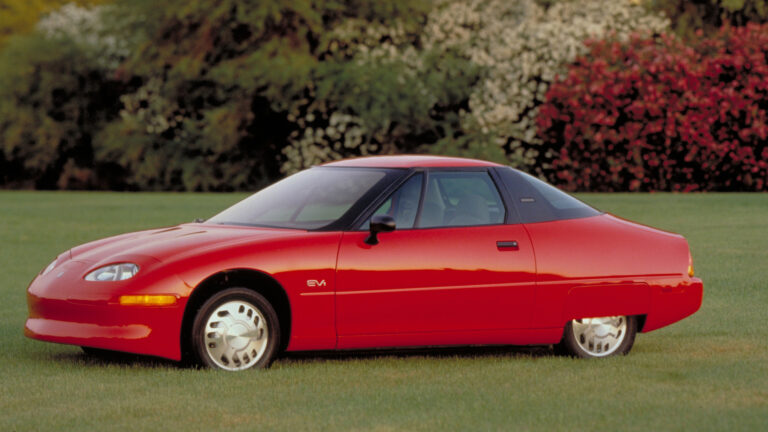
The first and second gen models were powered by lead-acid batteries. However, GM used nickel-metal hydride (NiMh) as an alternative in their 1999 3rd generation models.
Despite favourable responses from customers and lessees alike, GM ended production. The company shifted focus back to their combustion engine cars as EVs weren’t as profitable.
Some environment interest groups blame the oil industry for conspiring to limit the number of EVs on the road.
All EV1s were eventually crushed including the ones owned by customers. While the EV1 is not exactly a sports car, it opened the doors of an EV future to the masses.
tZero by AC Propulsion
AC Propulsion is an American pioneering engineering company that developed a concept electric sports car to prove EVs can be fun. Developed with government grants, the company made three of them and named the model tZero.
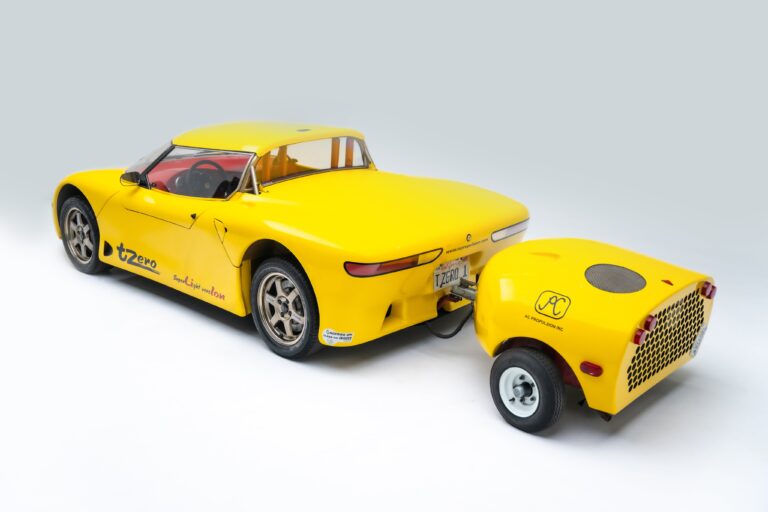
The car was powered by 28 lead-acid batteries (14 on each door) and had a range of 129 kilometres. What was truly impressive was its ability to go 0-100 in just 4 seconds, which in 1997 put a lot of Ferraris and Lamborghinis to shame.
However, developed as a concept, there was one catch; AC propulsion didn’t develop a charging mechanism and used a honda generator to power up the batteries. While the concept was developed to promote cleaner vehicles, the use of the generator nullified the effect.
Inspiration for Tesla
Martin Eberhard, flush with money after selling his ebook company, test drove the tZero in 2000 when he was looking to buy a sports car.
Impressed with the electric powertrain and the driving experience, he asked AC Propulsion to mass-produce the model. AC Propulsion, however, declined as they were an engineering company and not an automobile manufacturer.
Eberhard then asked them if he could do it, which the company agreed to by giving him one of the three tZeros as a test mule.
He then commissioned AC Propulsion to change the batteries from lead-acid to lithium-ion for safety reasons. This increased the range from 129 km to an incredible 483 km, proving EVs are a viable alternative to gasoline cars.
Martin Eberhard co-founded Tesla Inc. with his ebook partner Marc Tarpenning in 2003. Around the same time, Elon Musk also test drove the tZero and asked AC Propulsion the same question.
The company connected him with the founders of Tesla Inc., resulting in the former investing heavily into the company to develop the world’s first electric sports car.
The Tesla Roadster
When Tesla Inc. was developing their first car, they met with one roadblock – they didn’t have the means to mass-produce the chassis and the body panels.
The company went on to approach different sports car manufacturers to make their chassis until British sportscar maker Lotus agreed to sell the chassis of their popular model, ‘Elise’.
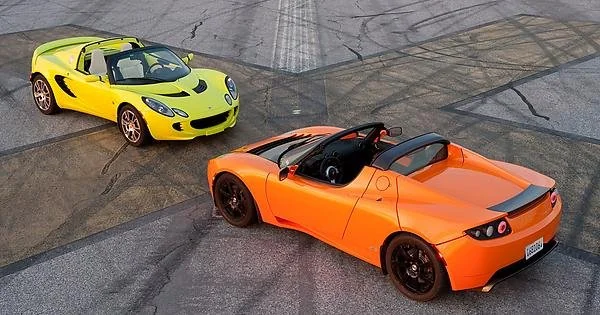
Tesla purchased 2500 Lotus Elise chassis and body panels giving birth to the iconic Tesla Roadster.
Featuring a 53 kWh lithium-ion, the first generation Tesla Roadster went from 0-100 kmph in just 3.9 seconds! With a 321 km range, a 3.5 hours charging time and a top-speed of 201 kmph, the car showed the world the performance prowess that EVs have to offer.
Electric Hypercars
The next decade saw the development of different electric sports cars, and perhaps two released in the yesteryears that really stick out would be the Rimac Nevera and Aspark Owl.
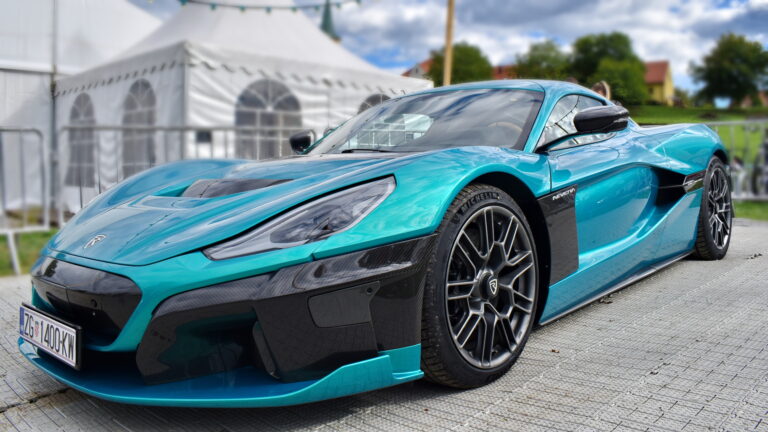
Croatian manufacturer, Rimac Automobili’s Rimac Nevera was an electric hypercar that truly left the whole world in awe. With 4 liquid-cooled motors on each wheel, the Nevera boasts a power output of 1887 BHP, making it go from 0-100 kmph in just 1.81 seconds, making it the quickest car in the world!
On the other hand, Japanese engineering firm, Aspark Owl, has been on their mission to develop the fastest EV since 2018. In 2014. Their revamped SP600 hyper car beat the Nevera to claim its title by going from 0-100 kmph in just 1.78 seconds!

Both of these electric supercars have a top speed upwards of 410 km/h.
The upcoming second-generation Tesla Roadster hits 0–100 kmph in 1.9 second making it the fastest Tesla.
The Future of Electric Sports Cars
Electric cars have come a long way since their advent, championing clean energy in both mobility and performance.
With major sports car makers transitioning to electric fully, perhaps the future is indeed electric. However, true test of race design and performance can only be tested one way – on a race track!
To read more about the electrified versions of motorsports, click here.
Follow our Instagram for all EV news and updates.


